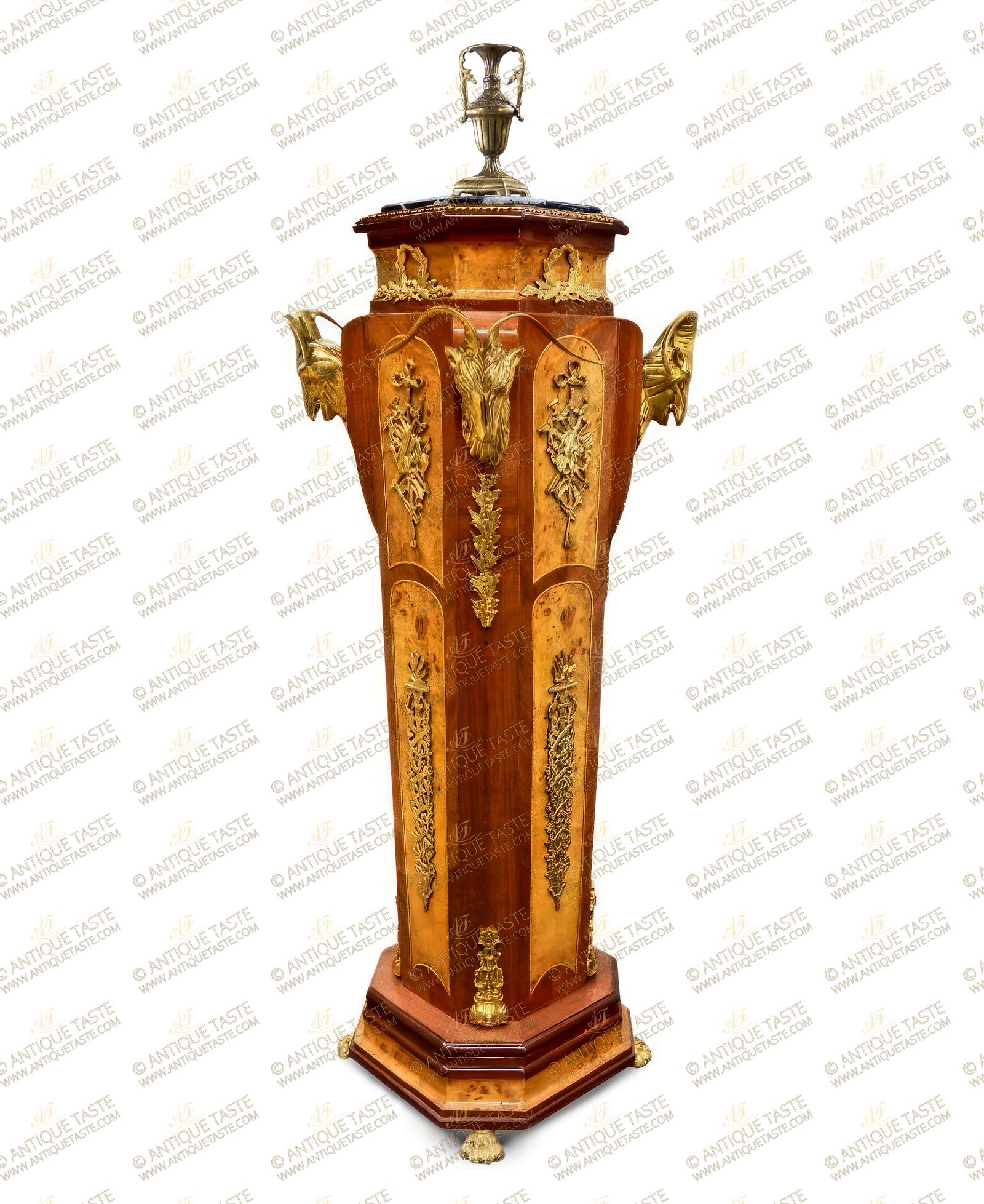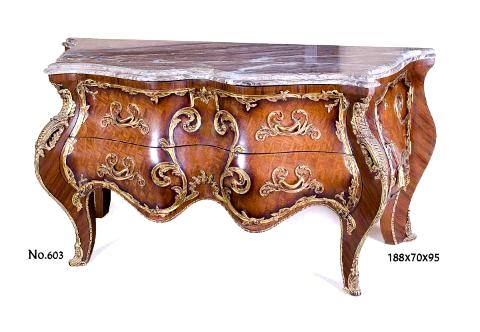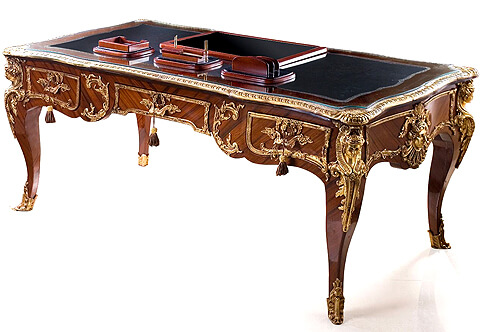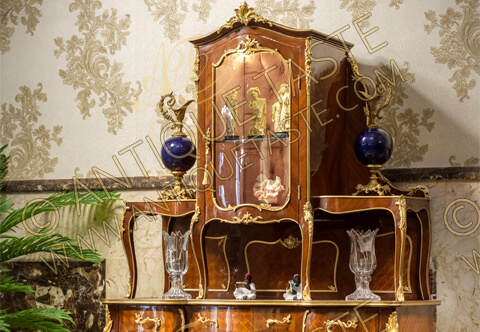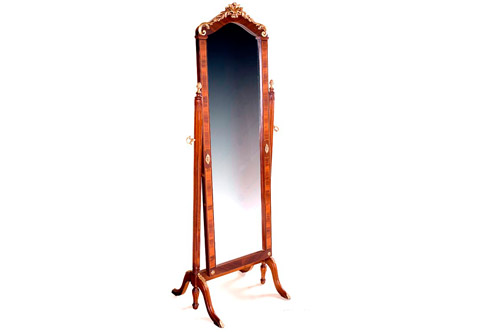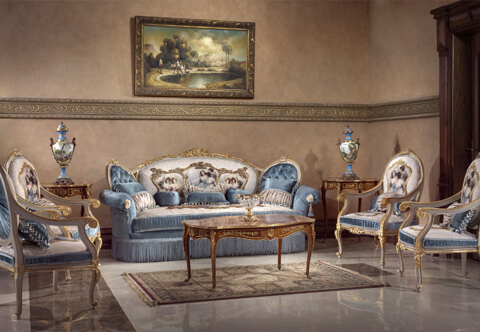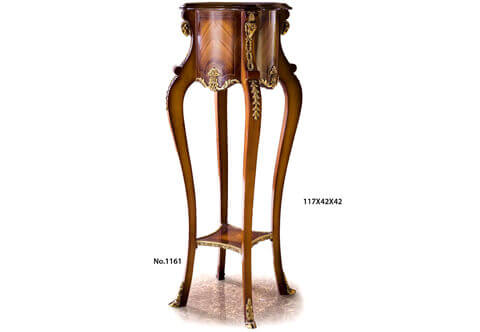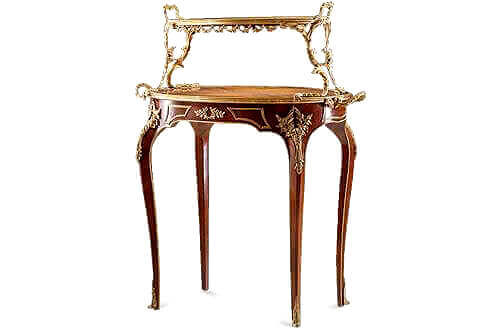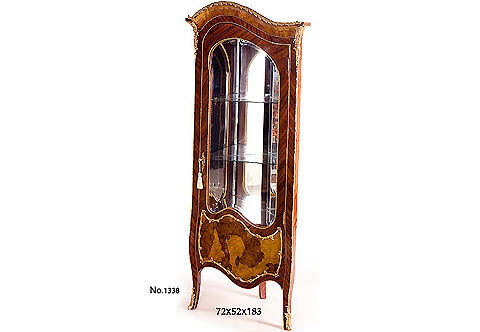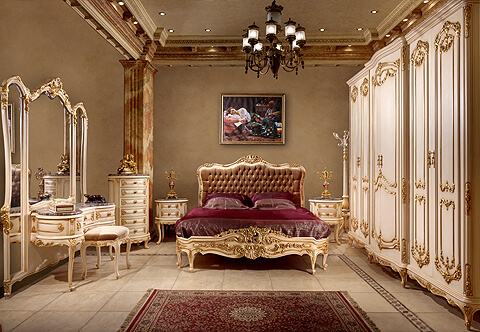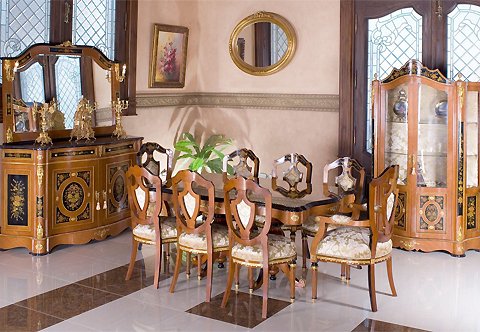French third quarter 19th Century Napoléon III style ormolu-mounted and double veneer inlaid grand Pedestal Stand after the model by Guillaume Grohé, Paris
Ref#ST-2693 | Description
A sublime French third quarter 19th Century Napoléon III style ormolu-mounted and double veneer inlaid octagonal shaped grand Pedestal Stand after the model by Guillaume Grohé, Paris;
The octagonal shaped inset marble top rests in a confirming leveled frieze and surrounded with a twisted ormolu band above a slightly concave shaped neck adorned with ribbon-tied laurel wreath ormolu mounts; all above the tapering form double veneer inlaid body adorned to four corners with exquisitely chiseled ormolu ram head masks surmounting imbricated ormolu acanthus leaves terminated to bottom with ormolu acanthus scrolling volute mounts and flanking on top large pierced ormolu mount of musical instruments amidst ribbon-tied foliage to the four sides enframed with a delicate domed rectangular ormolu band; under each is a large finely chiseled pierced ormolu mount of foliage and long torch of eternal flame intertwined with pair of snakes within an ormolu band; the lower leveled plinth is raised on ormolu lion paw feet.
Ref#ST-2693
H:137 x W:49 x D:49cm
Napoléon III Style | Guillaume Grohé
Guillaume Grohé
One of the most renowned ébénistes of the July Monarchy and Second Empire periods, Guillaume Grohé (d. 1885) received commissions from many of the époque's most important patrons including King Louis-Philippe, Queen Victoria, Napoléon III and Empress Eugénie. His works - made largely in collaboration with his elder brother Jean-Michel Grohé with whom he partnered from 1829 to 1861 - graced many an important residence including the Palais des Tuileries, the Château Fontainebleau, the Château de Compiègne, Chantilly and Chenonceaux. In addition to the characteristic use of the ram's mask and exceptional level of cisleur to the bronzes, the fanciful angle pendants relate closely to those on a cabinet exhibited by Grohé at the Paris Exposition Universelle in 1867 and again on a lacquer cabinet of the same form sold at Koller, Switzerland.
The Napoleon III style | The Second Empire Style
The Napoleon III style, also known as the Second Empire style , is a highly eclectic style of architecture and decorative arts, which uses elements of many different historical styles, and also made innovative use of modern materials, such as iron frameworks and glass skylights. It flourished during the reign of Emperor Napoleon III in France (1852–1871) and had an important influence on architecture and decoration in the rest of Europe and North America. Major examples of the style include the Opéra Garnier (1862–1871) in Paris by Charles Garnier, the Bibliothèque nationale de France, the Church of Saint Augustine (1860–1871), and the Philadelphia City Hall (1871–1901). The architectural style was closely connected with Haussmann's renovation of Paris carried out during the Second Empire; the new buildings, such as the Opéra, were intended as the focal points of the new boulevards.
Comfort was the first priority of Second Empire furniture. Chairs were elaborately upholstered with fringes, tassels, and expensive fabrics. Tapestry work on furniture was very much in style. The structure of chairs and sofas was usually entirely hidden by the upholstery or ornamented with copper, shell, or other decorative elements. Novel and exotic new materials, such as bamboo, papier-mâché, and rattan, were used for the first time in European furniture, along with polychrome wood, and wood painted with black lacquer. The upholstered pouffe, or footstool, appeared, along with the angle sofa and unusual chairs for intimate conversations between two persons (Le confident) or three people (Le indiscret). The crapaud (or toad) armchair was low, with a thickly padded back and arms, and a fringe that hid the legs of the chair.
The French Renaissance and the Henry II style were popular influences on chests and cabinets, buffets and credences, which were massive and built like small cathedrals, decorated with columns, frontons, cartouches, mascarons, and carved angels and chimeras. They were usually constructed of walnut or oak, or sometimes of poirier stained to resemble ebony. Another popular influence was the Louis XVI style, or French neoclassicism, which was preferred by the Empress Eugénie. Her rooms at the Tuileries Palace and other Places were decorated in this style.

